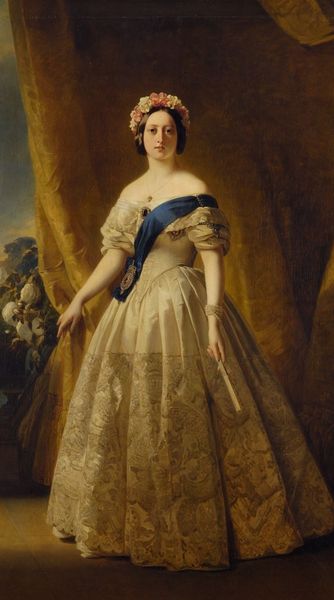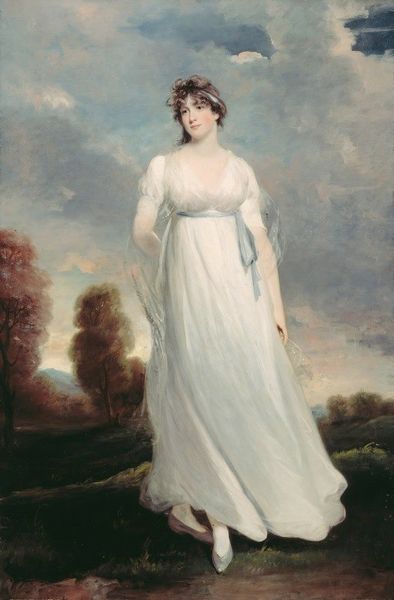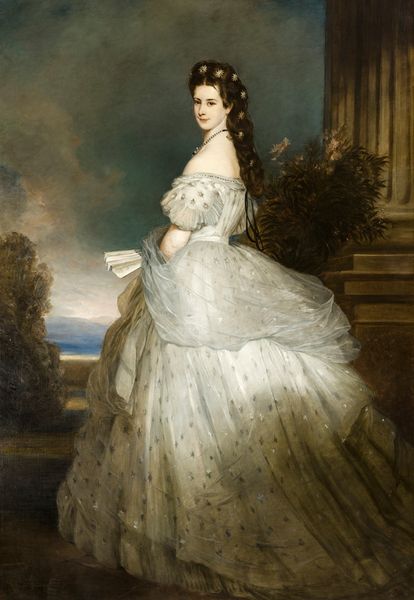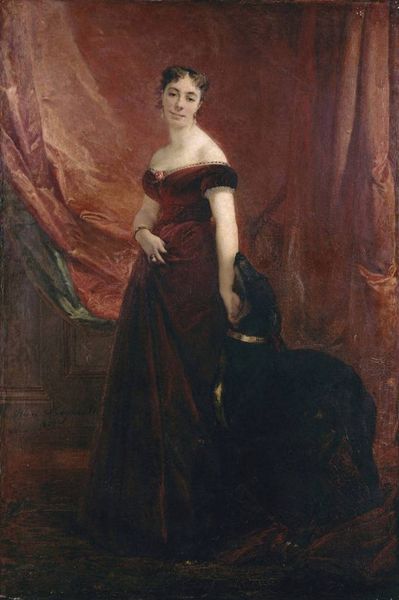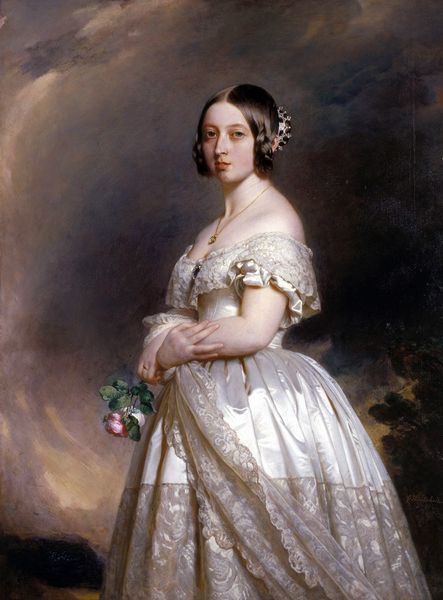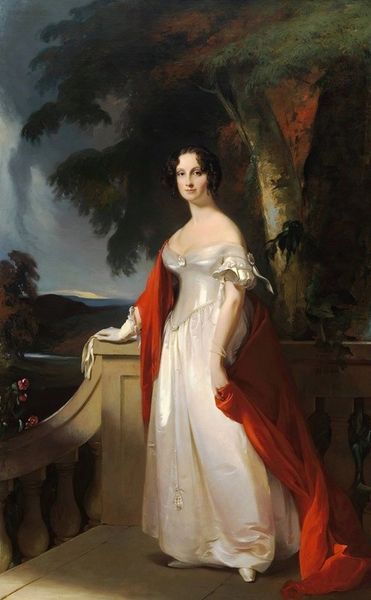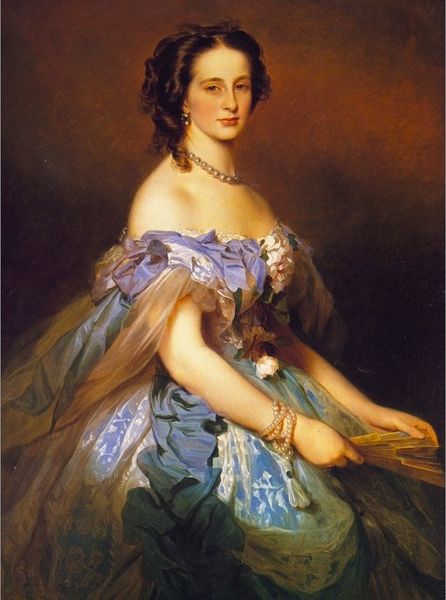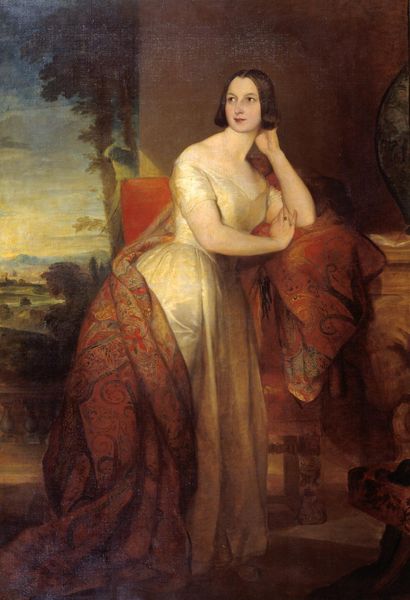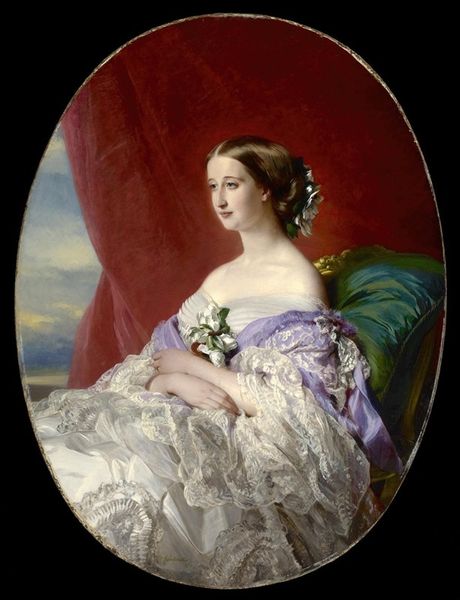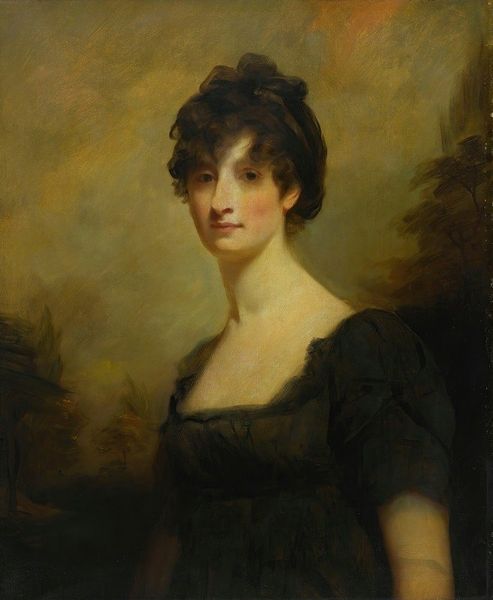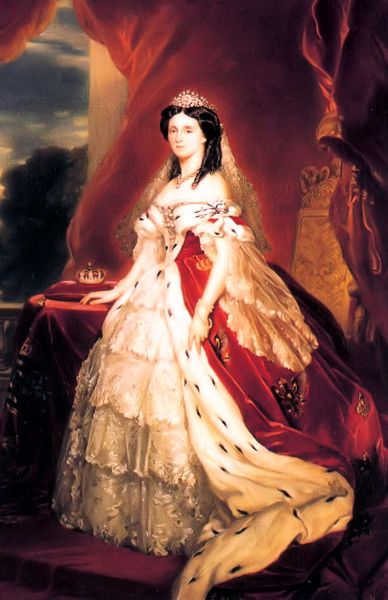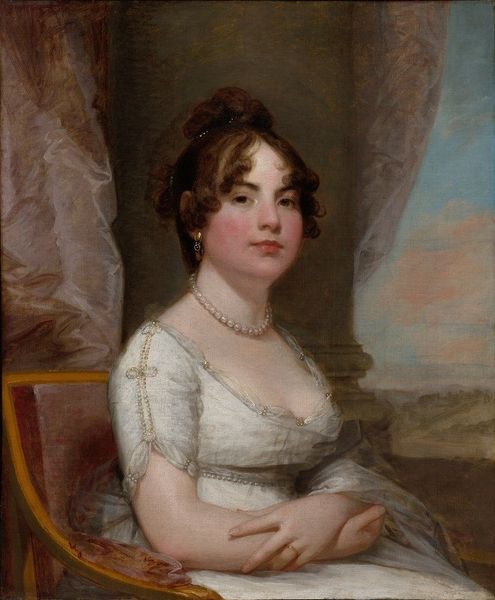
painting, oil-paint
#
portrait
#
figurative
#
fancy-picture
#
painting
#
oil-paint
#
figuration
#
intimism
#
romanticism
#
history-painting
#
academic-art
Copyright: Public Domain: Artvee
Curator: Franz Xaver Winterhalter, a renowned portraitist of 19th-century European royalty, painted this striking “Portrait of a Lady,” around that time. It exemplifies academic art and a fancy-picture theme so it should provide us with a chance to look at the social construction of femininity. Editor: The muted palette immediately creates a somber mood, despite the elaborate gown. The artist really captured the textures of the silk; observe how the light plays on those subtle folds. There’s a kind of structured elegance to it that is very precise. Curator: It's more than just fabric, isn't it? It’s a manifestation of social standing and power, that garment speaks volumes about the sitter’s position, her constraints, and expectations. That subtle red lining of the wrap adds an undertone that hints at her inner desires and sexuality within a highly structured society. It's really romantic. Editor: I see what you’re getting at. Looking more closely at the application of oil paint I find those contrasts work subtly on a level that escapes an immediate conclusion; however, the romanticism present relies on fairly stock pictorial constructs such as those dark backgrounds to isolate the subjects in a contemplative setting. The white dress in the middle contrasts perfectly. Curator: Consider her pose. A slight turn of the head, her gaze engaging yet reserved –it presents the negotiation between societal expectations of a lady. Her very controlled placement communicates so much about the role of women in the 19th century! Editor: Yes, her face shows a placid serenity achieved with precise brushwork. However, from my view the semiotics are fairly evident as well and the image plays out its coded and easily understood arrangement. The work strikes me as something primarily illustrative and technically efficient in nature. Curator: Perhaps. But what I appreciate is the layering – Winterhalter manages to simultaneously portray outward composure with suggestions of individual complexities in this historical context. It becomes a kind of cultural text open to interpretation. Editor: For me, stripping away the layers simply reveals proficient handling of color and form. Though perhaps lacking in a subversive quality, the way in which it creates its composition is interesting. It has been great to appreciate the contrast of historical contexts here as we have finished.
Comments
No comments
Be the first to comment and join the conversation on the ultimate creative platform.
